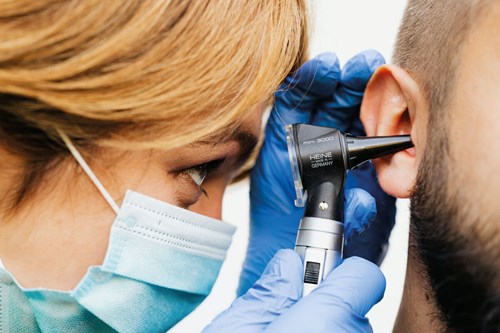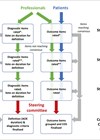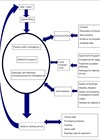With ear wax removal being a core part of ENT and audiology services, Seth Schwartz gives us his dos and don’ts.
We have all seen cartoons where a character pulls enough wax out of their ears to make a candle. Candle-sized accumulations are an exaggeration, but ear wax (technically called cerumen) can build up in large amounts in the ear canal leading to symptoms such as itching, fullness, or hearing loss.
For most of us, cerumen is not a problem to be dealt with but rather a part of the ears natural cleaning mechanism. Accordingly, most people do not need to worry about cleaning their ears. That being said, occlusion from ear wax is one of the most common ear-related problems for which patients see clinicians. It is estimated that around 12 million people seek medical care for impacted cerumen annually in the United States alone. It is such a common problem that the American Academy of Otolaryngology Head and Neck Surgery developed a clinical practice guideline related to cerumen; initially published in 2008, it was updated in 2017 [1].

Photo by Karolina Grabowska from Pexels.
What is ear wax?
Cerumen is a naturally occurring substance that is composed of oils secreted from skin cells in the ear canal mixed with shed skin cells and debris. Its consistency can vary dramatically from wet and sticky to dry and crusty. There is a natural mechanism where the cerumen migrates from deeper in the ear canal out to the opening where it can be swept or wiped away. This process involves migration of skin cells facilitated by movement of the jaw that occurs during chewing. In addition to the cleaning purpose of cerumen, its natural acidity provides some protection against bacteria and fungi and helps to prevent infection. Because of these beneficial aspects of cerumen, the clinical practice guideline recommends against removal of non-impacted cerumen.
When is cerumen a problem?
Several factors can interfere with this natural clearing process. These include unusually narrow ear canals, as seen in children and some developmentally delayed individuals, blockage from ear plugs or hearing aids, drying of the cerumen that can occur as a result of ageing, or occasionally from over production.
“It is estimated that around 12 million people seek medical care for impacted cerumen annually in the United States alone”
When cerumen builds up and causes symptoms, or in instances where examination of the ear is necessary and the cerumen blocks examination, this is called a cerumen impaction. The canal can be up to 80% occluded before most people will notice a change in hearing. In these instances of symptoms caused by obstructing cerumen or when examination is warranted but not possible, removal of the cerumen is indicated.
How should cerumen be removed?
There are three principal methods for removal of impacted cerumen. These included using wax softening drops, irrigation of the impacted cerumen, or manual removal using instruments under direct vision. The guideline does not call out a preferred method. Wax softening drops are available without a prescription and can be used safely at home. There are home irrigation systems as well. Most of these are safe, but the guideline recommends against the use of high-pressure irrigation systems that can damage the ear canal or ear drum. Manual removal should be done by an appropriately trained clinician with proper equipment. Manual removal by a clinician may also be necessary if the other methods are unsuccessful or not safe. Use of drops and irrigation are not safe for all patients. The guideline recommends that all patients be assessed for these factors to determine the best method for ear cleaning. If there is a hole in the ear drum, the patient has had prior surgery to the ear, or if there are medical factors such as poorly controlled diabetes or a history of radiation to the ear canal, then manual removal by an appropriately trained clinician may be the appropriate method.
What not to do
There are certain cleaning methods that can be dangerous and lead to significant harm. The guideline specifically calls out a few of these. Ear candling is a method where a hollow candle is placed over the ear canal and lit. The heat from the flame is intended to create a vacuum that sucks wax from the ear. Multiple studies have demonstrated that this method is ineffective and does not actually remove any wax. Additionally, there are a number of reports of significant facial burns from use of ear candles. Accordingly, the FDA, and subsequently the AAO guideline, recommends against the use of ear candles.
Cotton-tipped swabs (eg. Q-tips) are regularly used by patients to clean ears. These have also been found to cause harm. While fairly soft, the tips can still cause scratches inside the ear canal that lead to infections. Furthermore, they can push wax deeper into the ear canal rather than removing it. There are specific warnings against use in the ear of some types of cotton tipped swabs. Given these harms and general lack of benefit, the guideline warns against their use.
Special considerations
There are a few situations where more aggressive management of cerumen is warranted. Patients who wear hearing aids require special care. Not only can the ear piece of a hearing aid interfere with the normal cleaning mechanism of the ear, but the cerumen can damage or impair the function of the hearing aid. Accordingly, any patient that wears hearing aids should have an ear exam whenever they encounter a trained clinician and any cerumen, obstructive or not, should be removed.
Additionally, there are some groups of patients that may be unable to convey or recognise symptoms associated with impacted cerumen. Children, developmentally delayed adults, or cognitively impaired elderly patients benefit from an assessment for impacted cerumen and removal if identified during a healthcare encounter. There are several studies showing improved hearing and cognitive function in patients after removal of obstructive cerumen in these populations [2].
Conclusions
While some patients fear embarrassment from dirty ears, most patients require only education and reassurance of the health benefits of cerumen. If, however, patients become symptomatic from occlusion or they have ear complaints and their wax precluded examination, then ear cleaning is warranted and should be performed either at home or in the office with one of the safe methods described.
References
1. Schwartz SR, Magit AE, Rosenfeld RM, et al. Clinical Practice Guideline (Update): Earwax (Cerumen Impaction). Otolaryngol Head Neck Surg 2017;156(1_suppl):S1-29.
2. Moore AM, Voytas J, Kowalski D, Maddens M. Cerumen, hearing, and cognition in the elderly. J Am Med Dir Assoc 2002;3(3):136-9.









